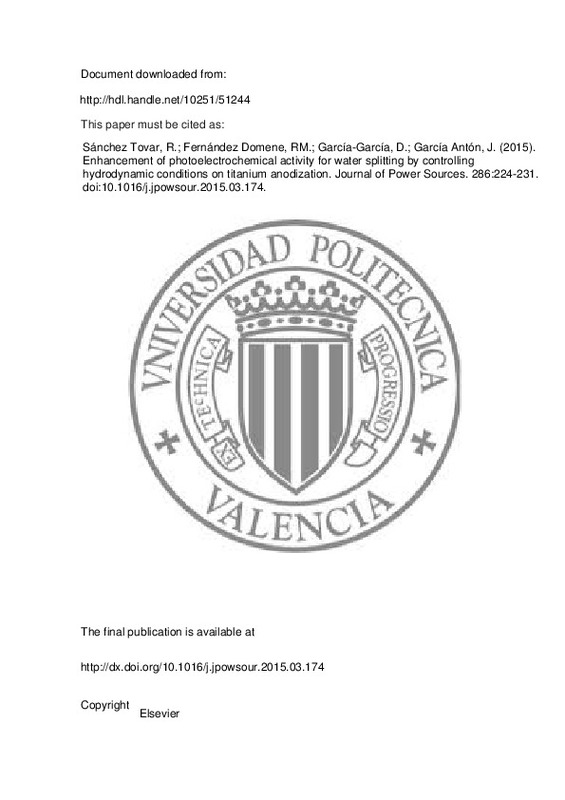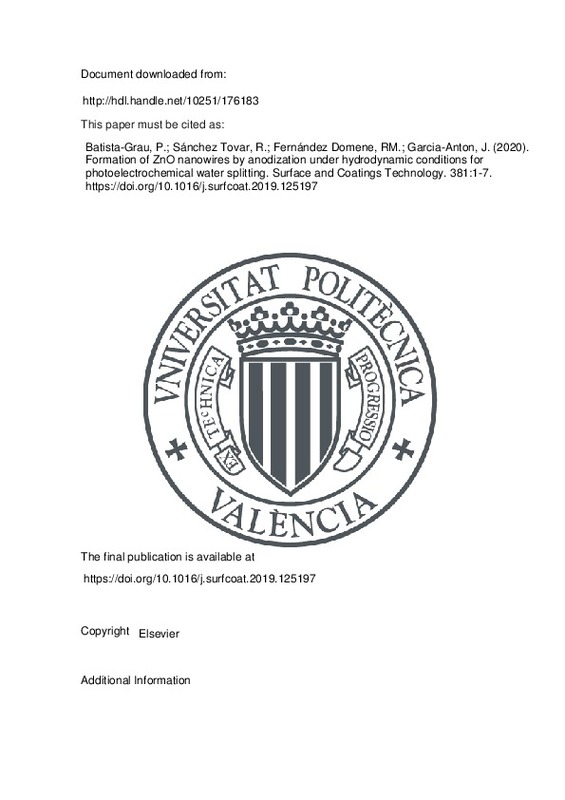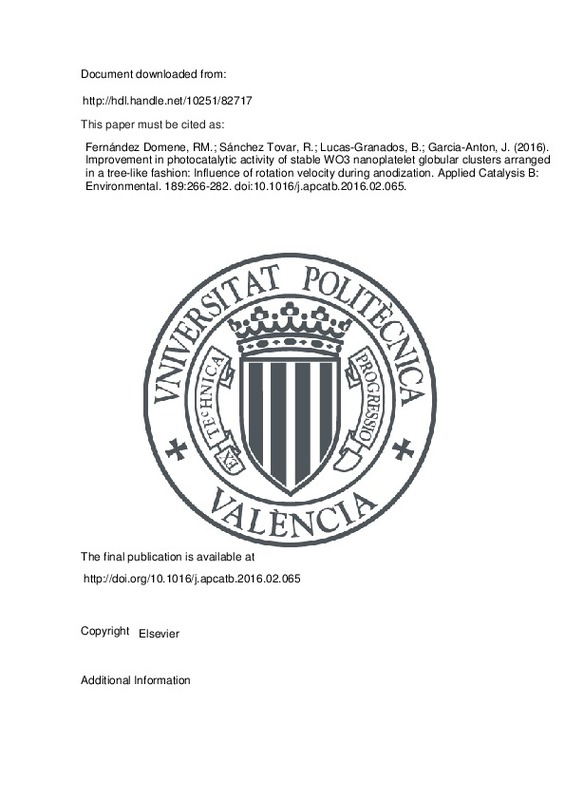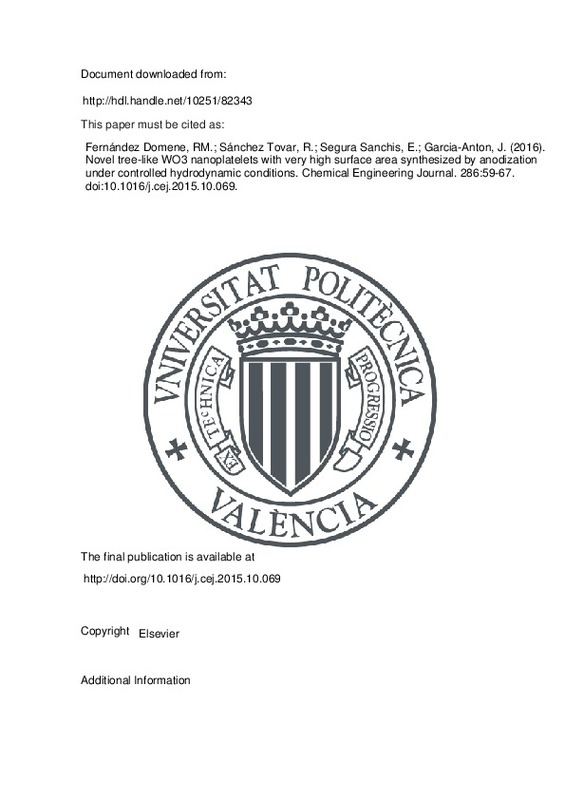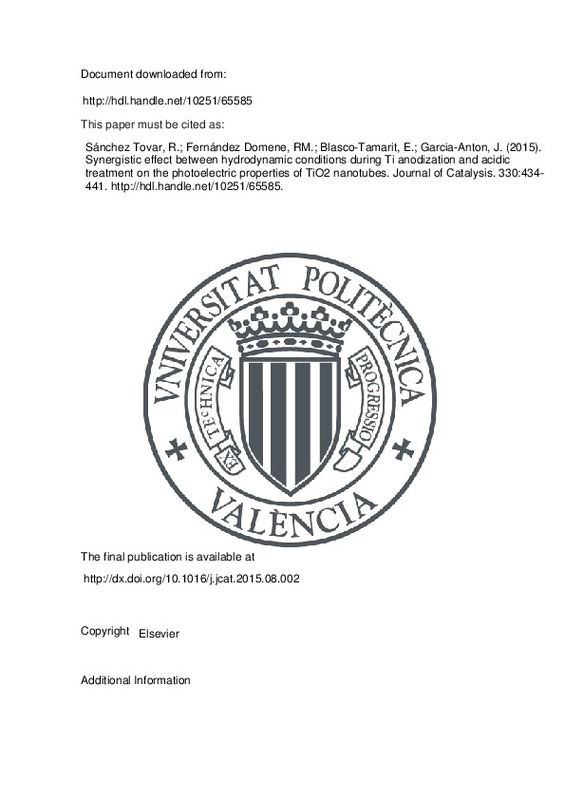

Listar por palabra clave "Hydrodynamic conditions"
RiuNet: Repositorio Institucional de la Universidad Politécnica de Valencia
- RiuNet repositorio UPV
- :
- Listar por palabra clave
JavaScript is disabled for your browser. Some features of this site may not work without it.
Buscar en RiuNet
Listar
Mi cuenta
Ayuda RiuNet
Admin. UPV
Listar por palabra clave "Hydrodynamic conditions"
Mostrando ítems 1-8 de 8
-
Lucas-Granados, Bianca; Sánchez Tovar, Rita; Fernández Domene, Ramón Manuel; Garcia-Anton, Jose (Elsevier, 2017-01-15)[EN] Iron oxide nanostructures are of particular interest because they can be used as photocatalysts in water splitting due to their advantageous properties. Electrochemical anodization is one of the best techniques to ...
-
Sánchez Tovar, Rita; Fernández Domene, Ramón Manuel; García-García, D.M.; García Antón, José (Elsevier, 2015-03-31)This work studies the electrochemical and photoelectrochemical properties of a new type of TiO2 nanostructure (nanosponge) obtained by means of anodization in a glycerol/water/NH4F electrolyte under controlled hydrodynamic ...
-
Batista-Grau, Patricia; Sánchez Tovar, Rita; Fernández Domene, Ramón Manuel; Garcia-Anton, Jose (Elsevier, 2020-01-15)[EN] The present work studies the influence of hydrodynamic conditions (from 0 to 5000 rpm) during Zn anodization process on the morphology, structure and photoelectrocatalytic behavior of ZnO nanostructures. For this ...
-
Fernández Domene, Ramón Manuel; Sánchez Tovar, Rita; Lucas-Granados, Bianca; Garcia-Anton, Jose (Elsevier, 2016-07-15)This study investigates the influence of controlled hydrodynamic conditions during anodization of tungsten (W) on the morphological, electrochemical and photocatalytic properties of a novel WO3 nanostructure: globular ...
-
Mejía, Amanda; Cassiraga, Eduardo Fabián; Sahuquillo Herráiz, Andrés (Springer Verlag (Germany), 2012)Nitrate concentrations in multi-aquifer systems are heavily affected by the presence of wellbores (active or abandoned) that are screened in several aquifers. The spatial variability of hydraulic conductivity in the confining ...
-
Fernández Domene, Ramón Manuel; Sánchez Tovar, Rita; Segura Sanchis, Elena; Garcia-Anton, Jose (Elsevier, 2016-02-15)In the present work, a new WO3 nanostructure has been obtained by anodization in a H2SO4/NaF electrolyte under controlled hydrodynamic conditions using a Rotating Disk Electrode (RDE) configuration. Anodized samples were ...
-
Fernández Domene, Ramón Manuel; Sánchez Tovar, Rita; Sanchez-Gonzalez, S.; García Antón, José (Elsevier, 2016-11-02)This work studies the influence of using hydrodynamic conditions during anodization on the morphology and electrochemical properties of anatase/rutile mixed TiO2 nanotubes (Reynolds number, Re = 0) and nanosponges (Re > ...
-
Sánchez Tovar, Rita; Fernández Domene, Ramón Manuel; Martinez Sanchez, Alejandro; Blasco Tamarit, María Encarnación; García-Antón, José (Elsevier, 2015-10)In the present work, the combined influence of controlled hydrodynamic conditions during Ti anodization and the acidic treatment with HClO4 on the photoelectric properties of mixed anatase/rutile TiO2 nanotubes has been ...
Mostrando ítems 1-8 de 8

Universitat Politècnica de València. Unidad de Documentación Científica de la Biblioteca (+34) 96 387 70 85 · RiuNet@bib.upv.es



